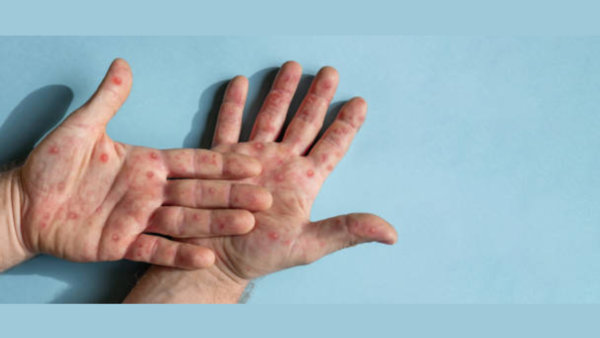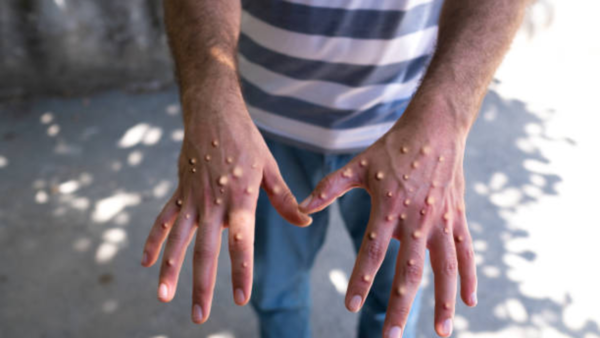In a meeting chaired by the Union Health Minister on Saturday, it was decided that as a matter of abundant caution, certain measures (such as sensitizing the health units at all the airports, seaports, and ground crossings; readying the testing Laboratories (32 in no.); gearing up health facilities for detecting, isolating and managing any case, etc.) are put in place.
Why is monkeypox a big concern this year?
There is a reason to worry because the strain of monkeypox virus that is in circulation in the Democratic Republic of Congo, is Clade 1b, and is virulent in nature. It has a death rate of 3% which is in sharp contrast to the death rate of 0.1% seen in other strains of monkeypox.
Is monkeypox fatal?
Roger Kamba, the Health Minister of the Democratic Republic of the Congo (DRC), reported that since the beginning of this year, the DRC has so far documented 16,700 confirmed or suspected cases of mpox, including more than 570 deaths, an increase from the 15,664 suspected cases and 548 deaths reported last week. The disease, affecting 17 African countries and several others outside the continent, is notably impacting younger populations, particularly children under 15, Kamba told the Xinhua news agency, describing this as a “novelty” in the context of the outbreak. According to the African Union’s health agency, the number of new mpox cases reported in 2024 represents a 160 per cent increase compared to the same period in 2023.
How many cases of monkeypox have been reported in India?
Since 2022, a total of 30 cases were detected in India with the last case in March 2024. India reported the first case of monkeypox in July 2022. Globally since 2022, WHO has reported 99,176 cases and 208 deaths due to Monkeypox from 116 countries.

Is there a risk of a big outbreak of monkeypox in India?
According to Muzamil Sultan, Senior Registrar- Department of Critical Care Medicine, Marengo Asia Hospital Gurugram, although there have been cases of monkeypox recorded in India, there is still little chance of a significant outbreak. Unlike several other viral illnesses, monkeypox cannot be shared easily and instead needs close, continuous contact to spread. In order to stop the spread of the infection, effective containment strategies are essential. These include contact tracing, isolating confirmed cases, and raising public awareness. India’s healthcare system, continuous monitoring, and immunization programs can all work to stop the spread. But in order to stop cases from getting worse, especially in high-risk groups, care is necessary. The risk of a significant epidemic can be reduced with prompt medical intervention and routine surveillance.
Will the monsoon worsen the monkeypox situation in India if there is an outbreak?
“The situation with monkeypox in India is not going to get any worse during the monsoon season. Unlike water or the air, which are hazardous during the monsoon, monkeypox mostly spreads through direct contact with infected people or contaminated items. However, because there are more cases of various monsoon-related illnesses during this season, healthcare resources may be strained, which might make response efforts more difficult. Controlling the spread still requires adhering to strict healthcare protocols, which include isolation, cleanliness, and prompt medical intervention. Although caution is advised, it is not anticipated that the monsoon will make the monkeypox situation worse,” said Dr Muzamil Sultan.
Do Indians have strong immunity to fight against the new strain of monkeypox, Clade 1b?
On the immunity against the new monkeypox strain, Dr Sultan says: The immune system faces a challenge from the novel strain of monkeypox, known as Clade 1b, which differs from the more common forms previously encountered. Like populations everywhere else, Indians might not have had immunity to this particular strain before. Smallpox immunization was discontinued decades ago in India, so while some people who have received the vaccine may have some cross-protection, this is not the case for everyone.

Individual variations exist in immunity, and important influences include age, general health, and history of vaccinations. Although there may be some inherent diversity in immune responses due to the various genetic backgrounds of the Indian people, universal immunity is not guaranteed. Infection management and prevention depend heavily on public health initiatives, such as immunization. There isn’t enough proof to say that Indians are immune to Clade 1b by nature right now. To counter this new hazard, alertness, prompt diagnosis, and adherence to preventive measures are crucial. Controlling its spread will mostly depend on public health initiatives.
Who is at the highest risk of getting monkeypox?
As per the WHO people who have close contact with someone who has mpox are at risk of infection. Close contact includes skin-to-skin (such as touching or sex) and mouth-to-mouth, or mouth-to-skin contact (such as kissing), and can also include being face-to-face with someone who has mpox (such as talking or breathing close to one another, which can generate infectious respiratory particles). People who have contact with clothing, bedding, towels, objects, electronics and other surfaces that have been touched by someone with mpox are also at risk.
Is there a vaccine against monkeypox?
WHO recommends use of MVA-BN or LC16 vaccines, or the ACAM2000 vaccine. “Mass vaccination is not currently recommended. Travellers who may be at risk based on an individual risk assessment with their health care provider may wish to consider vaccination,” the WHO says.
Can you get monkeypox twice or more than once?
There have been cases of recurrence of monkeypox. Health experts suggest taking precautions and practicing preventive measures to stop contracting the viral infection.
What are the symptoms of monkeypox?
Common symptoms of monkeypox include a rash which may last for 2–4 weeks. This may start with fever, headache, muscle aches, back pain, fatigue and swollen glands (lymph nodes). The rash looks like blisters or sores, and can appear on the face, palms of the hands, soles of the feet, groin, genital and/or anal regions. Some people develop inflammation inside the rectum (proctitis) that can cause severe pain, as well as inflammation of the genitals that may cause difficulties urinating.
Can animals carry monkeypox virus?
Some species of monkeys or a terrestrial rodent (such as the tree squirrel) can be the carriers of monkeypox virus. Physical contact with an infected animal or its meat through bites or scratches, or during hunting activities can cause the disease. The virus can also be caught through eating contaminated meat which is not cooked thoroughly.
How to take care of monkeypox lesions
What are the preventive measures?
To prevent monkeypox, practice good hygiene and avoid close contact with infected individuals or animals. Wash hands frequently with soap and water, and use hand sanitizer when necessary. Avoid handling wild animals, especially rodents and primates, and be cautious around sick animals. In areas with monkeypox outbreaks, use personal protective equipment (PPE) and maintain good environmental sanitation. Ensure any cuts or wounds are covered and seek medical advice if you experience symptoms such as fever, rash, or swollen lymph nodes.
Source link
Modified by Maaaty at Cheap Generic Pharmacy

